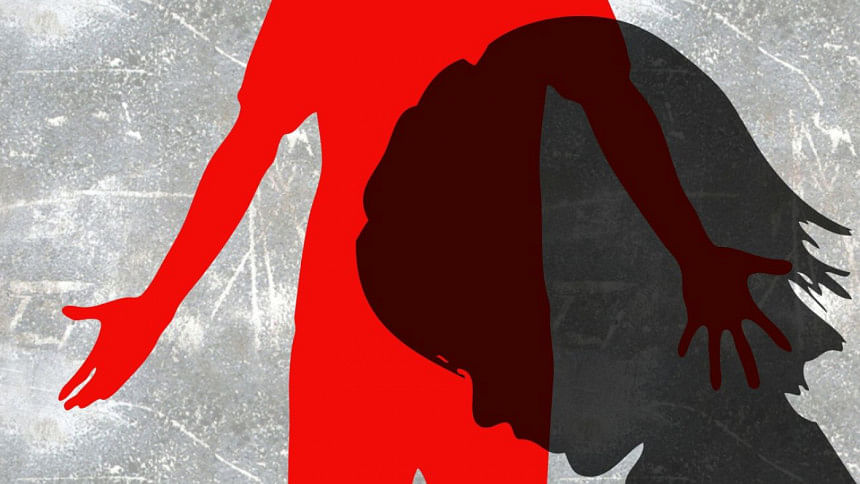How could this happen again?

Where do you even begin when talking about the murder of 10-year-old Sagar Barman? That it was inhumane he was killed by pumping air into his body through his rectum? Or that this is not the first case, or even the second, of such a murder in recent memory: that 13-year-olds Rakib and Rajon were both murdered inhumanely only last year? Or, that despite death penalties given to the charged in both the previous murders, we see the repetition of this horror?
Regardless of our proclaimed love of the innocence of children, far too many times, we are accustomed to turning a blind eye to the structural conditions that enable these incidents. Following the social media outrage over the video of Rakib being tortured last year, and the close proximity of Rajon's death, the law took its rightful course. But, here one must point to two other factors. One, that child labour, despite being illegal, is still widely prevalent, and children have to work in gruelling conditions and face inhumane treatment, all for a meagre sum at the end of the day. Secondly, if there is something in our collective psyche that makes us capable of such heinous acts towards children?
It is not surprising then that from Zobeda Textile and Spinning Mills in Narayanganj, where Sagar worked, 24 other children were rescued following his murder. Locals say that as many as 1,200 children work in the three factories (Zobeda Textile, Azharul Spinning Mills Ltd and Ekhlas Spinning Mills Ltd.) owned by the same person. The Bangladesh Bureau of Statistics published National Child Labour Survey 2013 reports that there are 1.70 million children between ages 5-17 who are engaged in child labour as per the definition. 1.28 million of them are engaged in hazardous working conditions.
This is despite our ratification of the Minimum Age Convention of the International Labour Organisation (ILO); the ILO Worst Forms of Child Labour Convention; and the UN Convention on the Rights of the Child. In 2015, the Child Labour Elimination Policy vowed to eradicate all forms of child labour in the country: a target we have clearly missed.
Of course child labour does not explain away the cruelty of what was done to Sagar. But, it is the premise: that Sagar was seen as just another instrument for profit by the owners and managers, cannot be overlooked. A Unicef survey, described the the myriad of abuses that these children face, including sexual exploitation, trafficking and physical violence. When violence and torture become part of the norm, can we really expect things to be different?
To make a point of the rift between how we see children from better-off socio-economic conditions and those from lower economic classes is banal. We are so accustomed to seeing children as domestic workers, rickshaw pullers, or day labourers breaking bricks, that it has become part of the status quo.
In this way, we have separated how we talk of children (innocent, beautiful, to be loved) to how we actually deal with them. But, that still does not explain how we go from using them as labour to the unrestrained violence against them that we see.
One possible reason is the way our culture has traditionally viewed corporal punishment –the 'spare the rod, spoil the child' phenomenon. Physical violence as punishment has been a part of our culture for so long, that even parents find it difficult today to come to terms with its long-term consequences.
It has been six years since the government formally banned corporal punishment in schools. Being a high school student at the time of the ban, I remember the reaction from teachers and parents to the ban: that sometimes a heavy hand was necessary, they said, that corporal punishment should be allowed in some cases. I also saw one particular teacher (this too in one of the most prestigious higher secondary schools in the capital), while slapping a student, saying out loud that there was no way that he could prove that he had been hit. So despite the law, teachers did not see hitting children as something wrong.
Sir Frank Peters, a royal goodwill ambassador and humanitarian, who has been one of the leading advocates of the ban on corporal punishment and its subsequent enforcement, has pointed out repeatedly the literature that categorically states the negative long-term impacts of corporal punishment. "A child damaged today is a broken adult tomorrow and owes NOTHING to society, except what society has given him/her (and we ought to view that as a warning)," he wrote in this paper last year following reports of minors being tortured by teachers. But the culture of physical violence, that adults have some sort of authority and power over children to hit them, is ingrained.
And, the children grow up learning from this that might is indeed right. We are, as a society still reeling from the decades of this culture of violence, and even though not all instances of abuse are to the degree of what was done to Sagar, Rakib or Rajon, the psychological and emotional trauma remains.
There's no explaining away the cruelty of these murders of children. But maybe we can in some way reduce the chances of this recurring if we can start at the roots to challenge the long held notions of violence as a means to discipline. At the same time the structural conditions that enable child labour to operate and make it socially acceptable must also be eradicated. As W H Auden once wrote:
I and the public know
What all schoolchildren learn,
Those to whom evil is done
Do evil in return.
The writer is a member of the editorial team, The Daily Star.

 For all latest news, follow The Daily Star's Google News channel.
For all latest news, follow The Daily Star's Google News channel. 



Comments